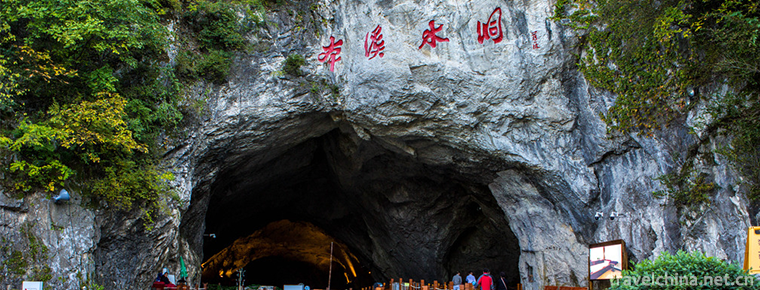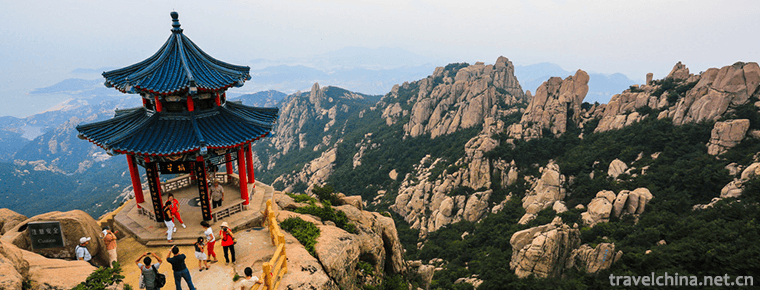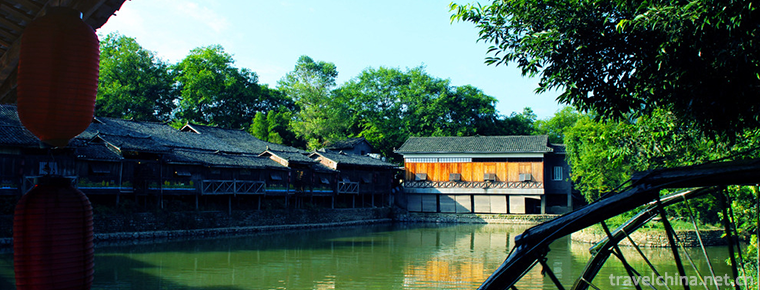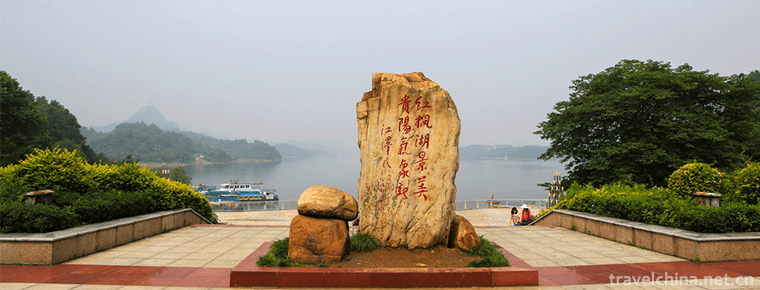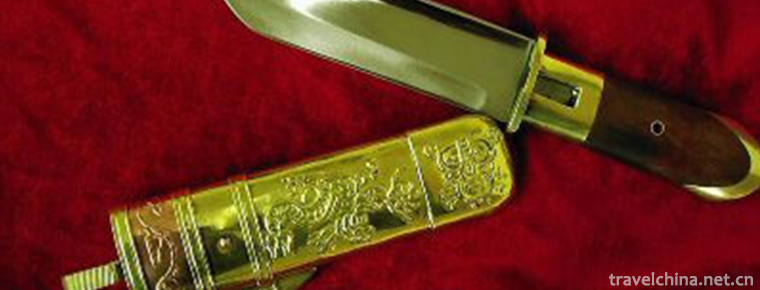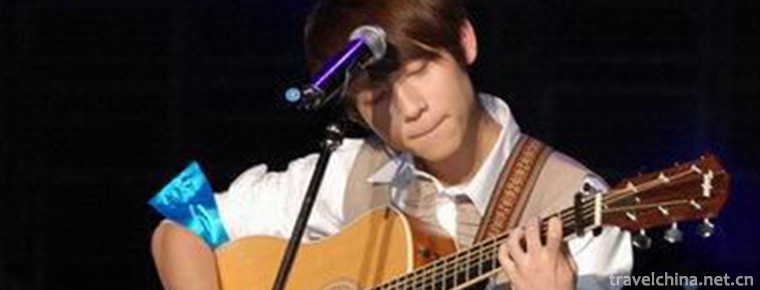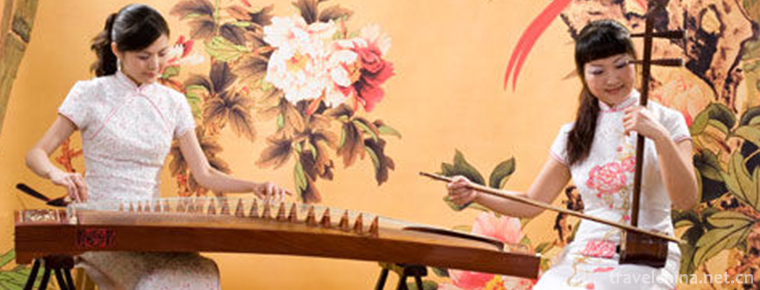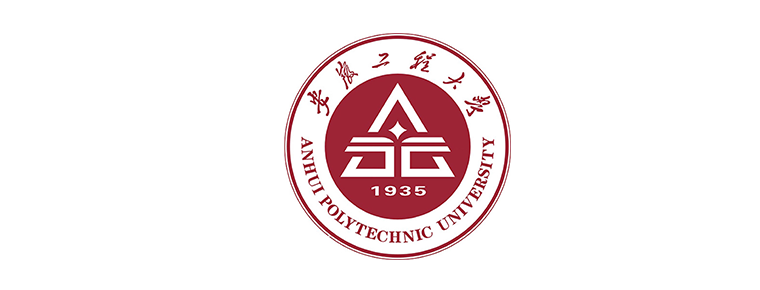The Custom of Collecting Ginseng in Changbai Mountain
The Custom of Collecting Ginseng in Changbai Mountain
The custom of collecting ginseng in Changbai Mountain has a long history. As early as the middle of the 3rd century, ginseng has been excavated. In order to survive and find, excavate and preserve ginseng, some mountain rules are objectively needed to restrain people's behavior. After thousands of years of practice, a set of unique folk customs, i.e. Changbai Mountain Customs of Collecting References, has gradually emerged and formed, which are composed of special language, rules of conduct, ethics, technology of digging ginseng and various taboos. These customs are passed on from generation to generation through oral instruction between teachers and apprentices of Fangshan people. So far.
"Changbai Mountain Participation Collection Customs" includes worship of beliefs, ethics, environmental awareness, value identification, traditional skills, special language, behavior rules, taboos, ginseng digging technology, field survival skills, equality and democracy, solidarity and mutual assistance, hardship and endurance, hardship and danger, honesty and trustworthiness, environmental protection, benefit to future generations, Excellent traditions such as harmonious coexistence between people and nature.
In June 2008, the custom of collecting ginseng in Changbai Mountain declared by Fusong County of Jilin Province was listed in the second batch of national intangible cultural heritage list with the approval of the State Council.
historical origin
The custom of collecting ginseng in Changbai Mountain has a long history. As early as the middle of the 3rd century, some people began to dig ginseng. People in the Changbai Mountains call it "releasing mountains" when they go deep into old forests to search for wild mountains. Participation is a sign of a man's maturity. The living conditions in primitive forests are extremely bad, so setting off mountains is a test and exercise of human courage, wisdom, physical fitness and even morality. In order to survive and find, excavate and preserve ginseng, some mountain rules are objectively needed to restrain people's behavior. After thousands of years of practice, a set of unique folk customs, including special language, rules of conduct, ethics, ginseng digging techniques and taboos, has gradually emerged and formed. The custom of Changbai Mountain's ginseng collection has been handed down from generation to generation through oral instruction between the teachers and apprentices of Fangshan people.
Folklore Activities
In Changbai Mountains, digging ginseng usually takes place after the rain and before the dew. When collecting ginseng in the mountains, it is usually a group of several people or a dozen people, called pull-bang; there is also a person who picks ginseng in the mountains, that is, single-stick picking. When pulling the band into the mountains, there was a man who was trusted by everyone and had rich experience in mountain climbing. The tools for collecting ginseng include deer bone drill, rope pulling stick, quick-acting knife, quick-acting axe, red velvet rope, oilcloth, copper coin, etc. When entering the mountain, all the ginseng pickers carried millet, pickles and cooking utensils. The first thing to enter the mountain is to choose a suitable site and build a shed with trunk and bark in the windward direction of Yangshan Depression, which is called warehouse pressing. Another master's house was built to worship the master of the mountain gods. When the participants search for mountains, they advance horizontally, about one stick away from each other, which is called the row stick; the person in the middle of the row is called the pick stick; the person who first releases the mountain picks the participants (called the first handle) in the middle of the side roll and the pick stick, also known as the pressing wake.
Changbai Mountain Ginseng, Manchu for Alhoda, meaning the king of herbs, folk also known as Gejie, Shencao, ghost cover, longevity flowers, mallets and so on. Panax quinquefolium
Perennial herbaceous perennial plant of the family, palmate compound leaves, whorled. Flowering in early summer, small, yellowish-green flowers, strong umbrellas, single terminal. Fruit oblate, red. Ginseng's name is very distinctive, the annual ginseng is composed of three leaflets, commonly known as three flowers; the biennial ginseng is composed of five leaflets, which are like hands, commonly known as horseshoe; the three-year-old two leaflets, five leaves per leaflet, commonly known as dimethyl; the four-year-old three leaflets, commonly known as lampstands; the five-year-old four leaflets, commonly known as four products. Leaves (also known as batches, pitches); six-year-old five branches, commonly known as five-grade leaves; there are six palm-shaped compound leaves, commonly known as six-grade leaves, but rarely, because ginseng grows to six-grade leaves will no longer grow, so the six-grade leaves are the most precious.
Ginseng has high medicinal value, because it contains abundant ginsenosides, ginsenic acid, protein, enzymes, polypeptides, amino acids, ginseng polysaccharides, ginseng volatile oil, panaxadiol, panaxatriol, plant sulfuric acid, vitamins and so on. Therefore, ginseng specializes in treating fever, headache and nausea, frequent urination, internal stroke and diseases. Posterior body deficiency and hemorrhage. Ginseng has the functions of nourishing and strengthening, improving physical and mental work ability, reducing fatigue, increasing the content of heme in blood and regulating central nervous system. It has good curative effect on cardiovascular diseases, stomach and liver diseases, diabetes mellitus, and different types of neurasthenia.
People in Changbai Mountains call ginseng "stick hammer" and go deep into old mountains and forests to search for and dig mountains as "releasing mountains". The custom of releasing mountains is a set of unique customs and habits formed by the working people of Changbai Mountains in the course of searching for and digging ginseng for two thousand years, which are composed of special language, rules of conduct, ethics, technology of digging ginseng, taboos, skills of field survival, special tools and implements, etc. It is taught orally and personally by the people of releasing mountains in Changbai Mountains. From generation to generation.
If Fangshan people find ginseng, they should shout: mallet! This is called Mountain. What kind of goods do you want? When someone sees it, he must answer immediately, say a few pints of leaves, and then everyone goes on to say "Quick Dang!" Quickly! This is called Jieshan. If you scream wrong, you will find a grass instead of ginseng, and you will dig it out and hold it. This scream will blow up the mountain. Sometimes we find not a single ginseng, but a piece or a cluster. We will answer it according to the number of leaves in the first tree. Ginseng should be dug by the head, first with red velvet rope tied with copper money on the ginseng leaves, in order to give ginseng with a cage, afraid that it escaped. They also cover ginseng with straw hats. Next, the head should be drawn on the ground around the ginseng one meter square frame, four people plugged in the four corners of the rope pull stick, called Gubao. Others light Artemisia mosquitoes to concentrate on digging ginseng. When digging ginseng, first break the soil, then slowly dig ginseng whiskers one by one with a smooth deer bone drill. Cut the soil around the ginseng whiskers and pull the ginseng out with moss. Subsequently, with moss, birch leaves, mixed with some of the original soil, ginseng wrapped up, with straw rope into ginseng steamed buns. Big ginseng steamed buns are held by the head. After digging the reference tree, the head should be cut off. That is to say, a Korean pine tree near the head should be selected. In the direction of digging the reference tree, a bark should be peeled off from the trunk of the tree, and a knife should be used to cut the bars on the white stubble trunk. The number of people who set off the mountain is engraved on the left, and a few people engrave several bars; on the right, they engrave a few bars of leaf ginseng and a few bars of leaf ginseng. This is to let you know that this place once dug ginseng, is a ginseng growing area.
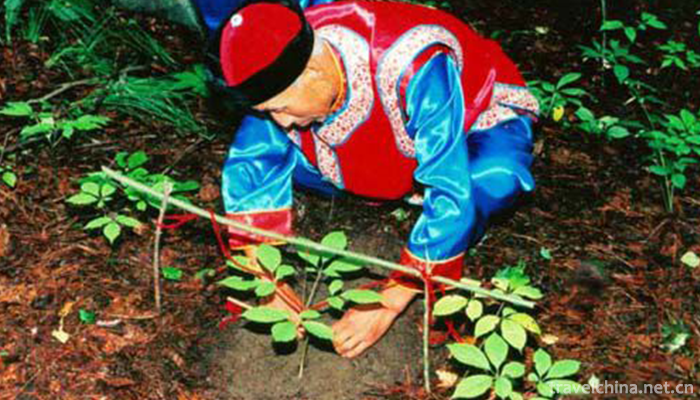
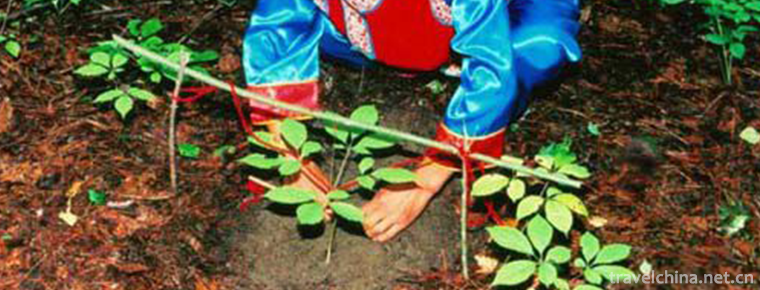
The Custom of Collecting Ginseng in Changbai Mountain
-
Benxi Water Tunnel Scenic Area
Benxi Water Cave, National AAAAA Class Tourist Scenic Spot, National Key Scenic Spot and Asian Member Unit of International Tourist Cave Association
Views: 235 Time 2018-12-04 -
Laoshan Scenic SpotQingdao Shandong Province
Laoshan Scenic Area of Qingdao, located in Qingdao City, Shandong Province, is one of the first national key scenic spots approved and announced by the State
Views: 209 Time 2018-12-08 -
Rushan Yintan Tourist Resort
Yintan Tourist Resort is located on the southeast coast of Rushan City, Weihai, Shandong Province. It connects Weihai to the east, Yantai to the north, Qingdao to the West and Huanghai to the south
Views: 127 Time 2018-12-22 -
Guilin Yijiang Margin Scenic Spot
Guilin Yijiang Rim Scenic Spot is situated on the northwest tour line of Guilin with long corridor. It is 32 kilometers away from the urban area (321 National Highway Lingui Wutong Town Section).
Views: 351 Time 2019-01-13 -
Hongfeng Lake Scenic Area
Hongfeng Lake Scenic Spot is located in the western suburb of Guiyang City, Guizhou Province, China. It is 28 kilometers away from Guiyang, the capital of Guizhou Province.
Views: 174 Time 2019-01-16 -
Baoan Waist Knife Forging Techniques
Baoan waist knife forging technology, Gansu Province Jishishan Baoan Sala Autonomous County traditional handicraft, one of the national intangible cultural heritage.
Views: 182 Time 2019-04-04 -
play and sing at the same time
To play and sing is to accompany with instruments and sing by oneself. Generally, guitar, piano and so on. In China, there are also folk instruments such as three strings and pipa.
Views: 228 Time 2019-04-25 -
Yueqing Poplar Wood Carving
Yueqing boxwood carving, a kind of ornamental round carving art with boxwood as its material, is mainly popular in Houhengcun, Wengyuan Street and Lecheng Street of Liushi Town in Yueqing City,
Views: 130 Time 2019-05-11 -
String Music Heze String Music
Heze string music is one of the second batch of national intangible cultural heritage announced by the State Council. It is a well-known traditional folk music in southwestern Shandong Province, and i
Views: 253 Time 2019-07-01 -
Yongchun Quan
Yongchun Quan is a traditional Chinese martial arts, a technology to stop invasion, a positive, streamlined and legitimate defense system, and the legal use of force. Compared with other traditional C
Views: 232 Time 2019-07-14 -
Anhui Polytechnic University
Anhui Engineering University is a provincial multi-disciplinary higher education institution and a key construction institution in Anhui province. It is the first pilot institution of comprehensive re
Views: 155 Time 2019-10-10 -
Zhaohua ancient city
Zhaohua ancient city is located in Zhaohua Town, Zhaohua District, Guangyuan City, Sichuan Province. After that, Zhaochang county was renamed as Yichang county. Located at the confluence of Bailong River, Jialing River and Qingjiang River, the Jialing River flows here with Wancheng water system and natural Taiji. It has the reputation of "the world's first landscape Taiji" natural wonder.
Views: 152 Time 2020-11-08
